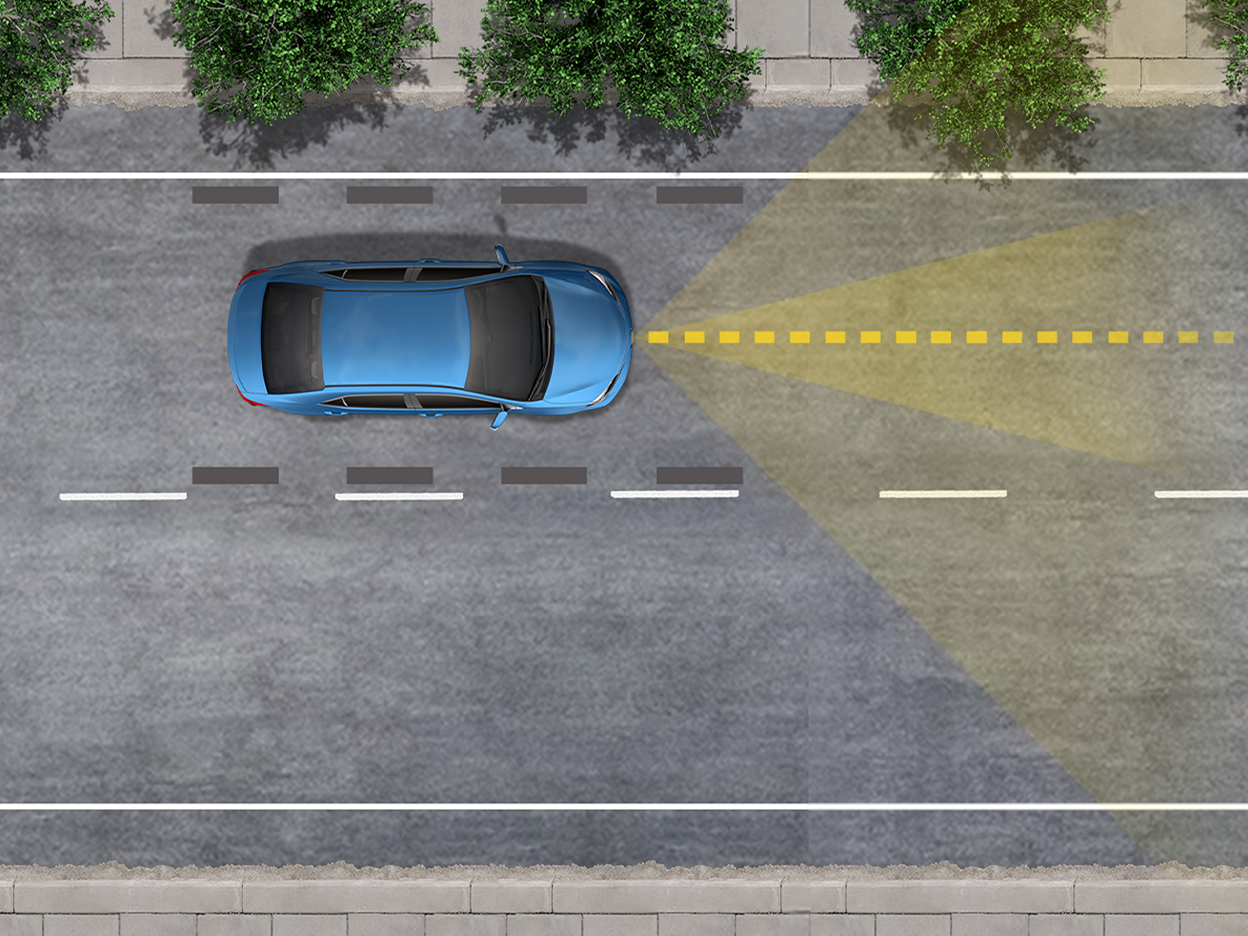Toyota Safety Sense 3.0 Update | Taking Safety to the Next Level

Toyota Safety Sense 3.0: Advanced safety suite for collision prevention, lane keeping, and enhanced nighttime driving. TSS 3.0 is designed to keep drivers and passengers safer, and we will explore how the system works for each area. Preventing or mitigating frontal collisions, keeping drivers within their lane, and improving driving at night. These innovative technologies help avoid accidents altogether.
Today, we’re exploring the latest innovations in automotive safety technology. If you’ve ever wondered how Toyota is making your driving experience safer, more convenient, and more efficient, you’re in the right place.
Table of Contents
Understanding Toyota Safety Sense 3.0
Toyota Safety Sense, or TSS, is Toyota’s comprehensive suite of advanced safety technologies and driver assistance systems. It’s not just about building cars; it’s about building vehicles that prioritize your safety on the road. TSS 3.0 takes this commitment to the next level.
Preventing or Mitigating Frontal Collisions
One of the primary focuses of TSS 3.0 is to prevent or mitigate frontal collisions. Imagine a system that helps you avoid accidents by identifying potential risks ahead and assisting you in taking the necessary actions. TSS 3.0 does just that.
Keeping Drivers Within Their Lane
Staying within your lane is fundamental to safe driving. TSS 3.0 includes features that help keep you on the right track. Whether you’re navigating busy city streets or cruising on the highway, this system provides valuable assistance.
Enhancing Road Safety During Nighttime Driving
Driving at night can be challenging, with reduced visibility and the risk of glare from oncoming headlights. TSS 3.0 introduces solutions to these issues, making nighttime driving safer and more comfortable.
The Evolution from Toyota Safety Sense 2.0 to 3.0
Before we delve deeper into TSS 3.0, it’s worth mentioning that this advanced safety suite builds upon the success of TSS 2.0. TSS 2.0 combined the features of Toyota Safety Sense C and TSS P suites, and it included six active safety and driver assistance systems.
One of these systems is the Automatic High Beams (AHB). AHB is designed to enhance nighttime visibility while reducing glare for other drivers. Here’s how it works:
When activated, AHB relies on an in-vehicle camera to detect the headlights of oncoming vehicles and the taillights of preceding vehicles. It then automatically toggles between high and low beams. By using high beams more frequently, AHB provides increased visibility for the driver.
However, it’s crucial to note that this system will not cycle headlights between low and high beams in every situation. Drivers are always responsible for their own safe driving. So, while AHB offers valuable assistance, it’s essential to remain attentive to your surroundings and drive safely.
In the following sections of this post, we’ll explore Toyota Safety Sense 3.0’s enhanced features and advancements and see step-by-step instructions for setting up and using each individual feature.
*Note: Refer to your specific vehicle’s Owner’s Manual for precise instructions as layouts may vary.*

Pre-Collision System (PCS)
The Pre-Collision System in TSS 3.0 is your trusty co-pilot when it comes to avoiding frontal collisions. It detects vehicles, pedestrians, and bicyclists, providing audio and visual warnings and brake assist when necessary. What’s new with TSS 3.0? It has enhanced intersection support that can even detect oncoming vehicles in multiple lanes and those approaching from the side. Plus, it now includes motorcyclist detection in specific situations.
How to Activate Pre-Collision System with Pedestrian Detection
Designed to detect vehicles, pedestrians, bicyclists, or motorcyclists.
Adjusting Warning Timing:
> 1. Access the Settings menu.
> 2. Select PCS and briefly hold OK.
> 3. Choose Warning Timing and press OK to toggle between settings (each press changes timing).
*Note: Changing Pre-Collision Warning Timing also affects Emergency Steering Assist Timing.
Enabling/Disabling PCS:
> 1. Access the PCS menu.
> 2. Toggle PCS on/off by pressing OK.
> 3. PCS reactivates when the engine switch is turned on.

Lane Departure Alert with Steering Assist (LDA)
LDA is there to keep you on the straight and narrow, literally. It warns you if you start drifting out of your lane and provides gentle corrective steering to help you stay on course. With TSS 3.0, LDA has improved lane recognition, even detecting certain three-dimensional objects like guardrails. So, no more unintended lane departures.
How to Activate Lane Departure Alert with Steering Assist
Issued for lane departure warnings above 30 mph.
Adjusting Alert Timing:
> 1. Access the Settings menu.
> 2. Select LDA and briefly hold OK.
> 3. Toggle LDA on/off by pressing OK.
Adjusting Alert Types (Vibration or Beep):
> 1. In the LDA settings menu, select Alert Options.
> 2. Press OK to change between vibration or beep.
Adjusting Alert Timing:
> 1. Press OK to change the alert timing (each press changes timing).
> 2. Disabling Lane Departure Alert:
> 3. Press and hold the LDA button on the steering wheel to turn it off.

Dynamic Radar Cruise Control (DRCC)
DRCC takes the hassle out of maintaining a safe following distance at cruising speeds. TSS 3.0 upgrades this system with more cruise distance settings and enhanced vehicle detection for smoother speed adjustments. It even anticipates lane changes and adjusts speed accordingly.
How to Activate Dynamic Radar Cruise Control
Active above 20 mph, maintains distance from the vehicle ahead.
Adjusting Following Distance:
> 1. Press the vehicle-to-vehicle distance switch to cycle between long, medium, and short distances.
Enabling/Disabling DRCC:
> 1. Press the DRCC button once to turn it on.
> 2. Press it again to turn it off.
> 3. Switching to Constant Speed Cruise Control:
> 4. Press and hold the DRCC button until it changes to constant speed mode.
> 5. It reverts to DRCC mode upon vehicle restart.
Speed Adjustment:
> 1. Increase by pressing the plus-resume button.
> 2. Decrease by pressing or holding the minus-set button.
> 3. Canceling Cruise Control:
> 4. Press the brake pedal or the cancel switch on the steering wheel.

Lane Tracing Assist (LTA)
When DRCC is activated, LTA comes into play, helping you stay centered in your lane. But TSS 3.0 goes further by steering the vehicle within its lane to provide extra space when passing other vehicles. Say goodbye to close encounters.
How to Activate Lane Tracing Assist (LTA)
> 1. Activated when Dynamic Radar Cruise Control has a speed set.
> 2. Quick press of the LTA switch on the steering wheel to activate/deactivate.

Road Sign Assist (RSA)
RSA is like having an extra set of eyes for road signs. It detects signs like speed limits, stop signs, and more, displaying them on your vehicle’s multi-information display. TSS 3.0 expands this feature to include warning signs, enhancing your awareness on the road.
How to Activate Road Sign Assist
Detects speed limit, stop, do not enter, yield signs, and warning signs.
Enabling/Disabling RSA:
> 1. Access the Settings menu.
> 2. Select RSA and press OK to toggle on/off.
> 3. Reactivation displays previously detected signs.

Automatic High Beams (AHB)
Driving at night just got easier with AHB. It automatically switches between high and low beams by detecting oncoming vehicle headlights and taillights of preceding vehicles, reducing glare for everyone on the road.
How to Activate Automatic High Beams
Automatically toggles between high and low beams above 21 mph.
Activate/Deactivate AHB:
> 1. Set the headlight switch to auto.
> 2. Press the AHB button to toggle.
Manual Activation of High Beams:
> 1. Push the headlight lever forward.
> 2. Manual Activation of Low Beams:
> 3. Move the headlight lever back to its standard position.
Proactive Driving Assist (PDA)
PDA is the new kid on the block in TSS 3.0, offering gentle braking and steering support for various driving tasks. It includes features like Obstacle Anticipation Assist, Deceleration Assist for speed control, and TSS 3.0 for lane assistance. With Toyota Safety Sense 3.0, you’re getting the latest and greatest in active safety technology. It’s all about making your driving experience safer, smoother, and more convenient. Stay safe on the road, and remember, Toyota’s got your back!
How to Activate Proactive Driving Assist
Available on certain TSS 3.0 equipped vehicles.
Adjusting PDA Sensitivity:
> 1. Access the PDA settings menu.
> 2. Select Sensitivity and press OK to change settings.
Individual Feature Control:
> 1. Toggle Deceleration Assist (DA), Steering Assist (SA), or Obstacle Anticipation Assist (OAA) on/off.
Disabling the Entire PDA System:
> 1. Access the PDA settings menu.
> 2. Select PDA and press OK to turn it off.
These step-by-step instructions provide an overview of how to set up and use the various features within Toyota Safety Sense 3.0. Please consult your vehicle’s Owner’s Manual for specific details, as vehicle layouts may differ slightly. For more information, visit Toyota’s official website at https://www.toyota.com/safety-sense/.

Key Features of Toyota Safety Sense 3.0
Enhanced Pre-Collision System (PCS): TSS 3.0 offers an upgraded PCS with improved intersection support. It is capable of detecting oncoming vehicles in multiple lanes, motorcyclists, and more.
Lane Departure Alert with Steering Assist (LDA): LDA now boasts enhanced lane recognition, preventing unintended lane departures by providing gentle corrective steering.
Dynamic Radar Cruise Control (DRCC): DRCC sees enhancements in TSS 3.0, including more cruise distance settings and improved vehicle detection for smoother speed adjustments.
Lane Tracing Assist (LTA): LTA helps you stay centered in your lane, and with TSS 3.0, it can also create additional space between your vehicle and others when changing lanes.
Emergency Driving Stop System: This safety feature monitors driver attentiveness and can bring the vehicle to a stop in certain conditions if the driver does not respond to prompts.
Road Sign Assist (RSA): RSA detects a wide variety of road signs, including speed limits and warning signs, providing drivers with increased awareness.
Automatic High Beams (AHB): AHB automatically toggles between high and low beams, improving nighttime visibility while reducing glare for other drivers.
Proactive Driving Assist (PDA): PDA is a new feature in TSS 3.0 that offers gentle braking and steering support for various driving tasks, including obstacle anticipation, speed control, and lane assistance.
Toyota Safety Sense 3.0
Now standard across the lineup are Blind Spot Monitors (BSM) with Rear Cross-Traffic Alert (RCTA) for a safer, more convenient driving experience. New Traffic Jam Assist (TJA) facilitates stop-and-go driving on congested roads by controlling acceleration, braking, and steering within a speed range of 0 to 25 mph. Toyota Safety Sense (TSS) is an advanced suite of safety features designed to keep drivers and passengers safer on the road. These innovative technologies help avoid accidents altogether. Here is a list of components within the suite:
- Pre-Collision System (PCS): Detects vehicles, pedestrians, cyclists, and motorcyclists, providing warnings and emergency braking if needed.
- Lane Departure Alert (LDA): Warns drivers of unintentional lane departure and may provide corrective steering.
- Dynamic Radar Cruise Control (DRCC): Maintains a set distance from the vehicle ahead, adjusting speed accordingly.
- Lane Tracing Assist (LTA): Keeps the vehicle centered in its lane using lane markers and preceding vehicles.
- Automatic High Beams (AHB): Automatically switches between high and low beams based on surrounding traffic.
- Road Sign Assist (RSA): Detects and displays road signs to enhance driver awareness.
- Proactive Driving Assist (PDA): Provides braking or steering support to maintain distance and stay in lane.
Recap of Toyota Safety Sense 3.0
In conclusion, Toyota Safety Sense 3.0 represents a significant leap forward in automotive safety and convenience. With its advanced features, including enhanced collision avoidance, lane-keeping assistance, adaptive cruise control, and more, TSS 3.0 is not just about technology; it’s about peace of mind. Whether you’re a Toyota enthusiast or a potential buyer, this suite of safety technologies ensures your journeys are safer, smoother, and more enjoyable. Toyota continues to lead the way in making driving safer for everyone on the road.
Frequently Asked Questions
TSS 3.0 is a suite of advanced safety technologies and driver assistance systems developed by Toyota to enhance vehicle safety and convenience.
TSS 3.0 includes enhanced Pre-Collision System (PCS), Lane Departure Alert with Steering Assist, Dynamic Radar Cruise Control (DRCC), Lane Tracing Assist (LTA), Emergency Driving Stop System, Road Sign Assist (RSA), Automatic High Beams (AHB), and Proactive Driving Assist (PDA).
TSS 3.0 availability may vary depending on the Toyota model and trim level. It’s essential to check with your local Toyota dealership for specific model information.
PCS is designed to help drivers mitigate or avoid frontal collisions by detecting vehicles, pedestrians, or bicyclists and providing warnings and brake assist when necessary. TSS 3.0 enhances this system with improved intersection support and motorcyclist detection.
LDA with Steering Assist detects unintentional lane departures and provides gentle corrective steering to keep the vehicle in its lane. TSS 3.0 enhances this feature with improved lane recognition.
DRCC maintains a safe following distance at cruising speeds by adjusting your vehicle’s speed based on the distance to the vehicle ahead. TSS 3.0 adds more cruise distance settings and improved vehicle detection.
Yes, TSS 3.0 includes the Emergency Driving Stop System, which can bring the vehicle to a stop under certain conditions if the driver does not respond to prompts.
RSA detects various road signs, including speed limits and warning signs, and displays them on the vehicle’s multi-information display, enhancing driver awareness.
AHB automatically toggles between high and low beams by detecting oncoming vehicle headlights and taillights of preceding vehicles, reducing glare for you and other drivers.
PDA is a new feature that provides gentle braking and steering support for various driving tasks, including obstacle anticipation, speed control, and lane assistance.
Retrofitting TSS 3.0 to older Toyota models may not always be possible due to hardware and software compatibility. Consult your local Toyota dealership for retrofitting options and compatibility.
While Toyota strives to make TSS 3.0 available globally, availability may vary by region and country. Check with your local Toyota dealer to confirm its availability in your area.
The frequency of over-the-air updates can vary, but Toyota aims to provide regular updates to enhance the functionality and performance of TSS 3.0. Your vehicle may receive notifications when updates are available.
TSS 3.0 components are integrated into the vehicle and typically do not require separate maintenance. However, as Toyota recommends, regular vehicle servicing and software updates will help ensure the system’s optimal performance.
Some TSS 3.0 features may be customizable through the vehicle’s settings, allowing you to adapt the system to your driving style. However, certain safety-critical features may not be adjustable for safety reasons.
No, TSS 3.0 is designed to assist drivers and enhance safety, but it is not a substitute for attentive and responsible driving. Drivers should always remain alert, follow traffic laws, and be ready to take control of the vehicle when necessary.
TSS 3.0 is gradually being integrated into various Toyota models. To determine which specific models and trim levels come with TSS 3.0, consult the official Toyota website or your local Toyota dealership.
TSS 3.0 is designed to operate efficiently and should not significantly impact vehicle fuel efficiency or performance. In fact, its adaptive features may enhance fuel economy by optimizing driving conditions.
Most TSS 3.0 features are designed to operate seamlessly in the background, providing assistance when needed. Visual and audible alerts will be triggered when the system detects a potential safety concern or when it requires driver attention.
While TSS 3.0 can significantly reduce the risk of accidents and collisions, it cannot guarantee the prevention of all incidents. Driver attentiveness and responsible driving remain crucial for overall road safety.
Note: Always refer to the vehicle’s Owner’s Manual for more detailed information about your specific vehicle. Safe driving practices should always be followed. For more details, contact your local Toyota Dealer or visit Toyota.com.

Cedric Jackson
Cedric is a Sales Pro with 20+ years of experience. He is currently a Sales Consultant at Toyota of Riverside. He aims to share his passion for product knowledge of the Toyota brand here on his blog. Cedric writes content here and produces short-form videos on YouTube, Instagram & TicTok. Connect with him here or on all social media @ cedricthecarguy 🙏🏾🤙🏾

Cedric Jackson
Cedric is a Sales Pro with 20+ years of experience. He is currently a Sales Consultant at Toyota of Riverside. He aims to share his passion for product knowledge of the Toyota brand here on his blog. Cedric writes content here and produces short-form videos on YouTube, Instagram & TicTok. Connect with him here or on all social media @ cedricthecarguy 🙏🏾🤙🏾

